- Administrator
- Albums and Singles
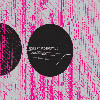 A work purely of modular analog synthesizer, Piotrowicz uses the simplicity of the sonic pallet to his advantage, creating a work that captures both the experimental dissonance of what is colloquy known as "noise" while propping up the entire work on a structure that’s more akin to electro-acoustic composition than the average Merzbow disc.
A work purely of modular analog synthesizer, Piotrowicz uses the simplicity of the sonic pallet to his advantage, creating a work that captures both the experimental dissonance of what is colloquy known as "noise" while propping up the entire work on a structure that’s more akin to electro-acoustic composition than the average Merzbow disc.
There does not seem to be a great deal of treatment or effects used on this album, if any. The color of the sound is that of buzzing ancient oscillators and pre-MIDI technology, without any unnecessary digital sheen or polish. Instead it’s a study of understatement, allowing the subtle tonal shifts from this “primitive” technology to dominate and is a study in textures, not programming or endurance.
The first and third tracks are ones that nudge into the realms of so called noise or power electronics on the push of stuttering sawtooth waves that buzz incessantly. Both tracks are heavily focused on the dense, harsh force of what is a relatively "ugly" sound, yet here it is presented with a significant amount of dynamic and tonal shift that instead of seeking to simply pummel the listener with its overt harshness instead invites closer listening and focus to note these miniscule changes that end up leading to more drastic shifts in the sound over time.
"Clinamen 2A" on the other hand is a much more subtle work, focusing on the subsonic bass frequencies of Piotrowicz’s synth that in its austerity calls to mind the clinical sonic studies of RLW or Bernhard Gunter. While not as akin to pure silence as the latter, the extreme low frequencies give the same sense of wide spaciousness that requires a close listening from the listener to fully absorb the skeletal structures that underlie the piece.
The closing "Clinamen 2B" concludes the album in a functionally appropriate way, combining both the pummeling sawtooth waveforms and complex undercurrent of the previous tracks into a more dynamic, pulsing manner that, just as it reaches an intensity of what could usually be associated with harsh noise it is all stripped away to allow the subtle underpinnings of the track to come forward, nuanced sounds that would otherwise go unheard.
Robert Piotrowicz is definitely an artist to keep an eye on in the realms of the electro-acoustic and experimental genres, though only credited with a few releases thus far, his work has shown quite the ear for both sonic extremity as well as nuanced structure and composition. There's no reason that fans of Francisco Lopez and Lionel Marchetti and their ilk won't love his work just as much.
samples:
Read More
- Administrator
- Albums and Singles
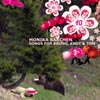 In celebration of the label's 10th year of activity as well as 60 releases, Gudrun Gut of Monika Enterprise has curated this compilation of the label's artists that manages to accurately capture the intent and vibe of the label, from electronic experimentations to pure, unadulterated sugary pop. Fans will be happy to know these are all exclusive tracks, and those unfamiliar with the label now have a perfect starting point.
In celebration of the label's 10th year of activity as well as 60 releases, Gudrun Gut of Monika Enterprise has curated this compilation of the label's artists that manages to accurately capture the intent and vibe of the label, from electronic experimentations to pure, unadulterated sugary pop. Fans will be happy to know these are all exclusive tracks, and those unfamiliar with the label now have a perfect starting point.
The compilation is well balanced between the abstract, stripped down electro-fueled day-glo pink take on Kraftwerk and the more subtle, subversive idiosyncratic take on pop music the label is known for as well. Chica and the Folder's "Kleines Hoppla" is one of the tracks that actually straddles this precarious line, meshing the big Bay City Rollers percussion section with Kraftwerkian electro and silly vocals and random sounds.
Members of Contriva each provide simple, but beautiful pop tracks adjacent to each other on the disc: Max Punktezahl's "Dashes" is a simple bit of gentle acoustic guitar over a metronomic digital synth pulse, while Masha Qrella's cover of Depeche Mode's "Goodnight Lovers" is all intimate acoustic guitar and soft, plaintive vocals that capture the mood of the original just fine. Both "L.A." by Eglantine Gouzy & Landini as well as Rosario Blefari's "Verdad" also manage to stay firmly in the realms of pop, the former is unadulterated saccharine while the latter's odd simplicity calls to mind some of Colin Newman's Provisionally Entitled the Singing Fish album with more vocals. Even with the backwards melody and stuttering rhythms of "I See A Soul," the unabashedly pop vocals of Mico place it squarely in conventional territory.
More suited to the dance floor would be label head Gudrun Gut's intentionally bizarre "Monika In Polen," which puts together polka samples, yodels, subwoofer rattling kick drum and basic synth elements that somehow make perfect sense together. Iris' "Fever" is more conventional, but its slow paced analog drum machine thump and soft vocals make it a perfect chill out kind of track.
Tracks like Dorit Chrysler's "Sweden" are even a bit more left-field: the instrumental theramin track manages to be both haunting yet somehow quaint, sort of like a perverse take on 1960s cartoon soundtracks. The plaintive, melancholy vocals and synth elements of Lile's "Sticky Images" make for a stark, but enjoyable contrast with the almost tangible, textural dissonance that enshrouds the track. Milenasong's "Streicheln" takes some simple folk elements and mixes them more with a dark, simple synth pulse and bizarre loops to make for one of the most captivating tracks on here, in my opinion. The piano and synth focus of Michaela Melian's instrumental "Locke Pistole Kreuz (Edit)" give the track an overall melancholy, reflective sense that is notably different than the mostly ebullient material here.
The fact that there is such a sense of joy and whimsy on this compilation is a definite asset, since so often music that is inclined towards the realms of experimentation and abstraction completely lacks those emotions, and would often choose to wallow in darkness. Here much of the material has no shame in being fun and jovial, yet still remains innovative and unique.
samples:
- Masha Qrella - Goodnight Lovers
- Gudrun Gut - Monika In Polen
- Mico - I See A Soul
Read More
- Administrator
- Albums and Singles
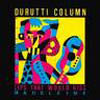 Differing from the other reissues, this one collects a slew of singles and b-side tracks that were recorded in the band's early days from 1980 to 1983 for the legendary labels Factory Benelux, Les Disques deu Crepuscule and Sordide Sentimental. Although the tracks span four years, there still a sense of cohesion to Vini Reilly's delicate chamber pop (mostly) instrumentals, all of which still seem timeless.
Differing from the other reissues, this one collects a slew of singles and b-side tracks that were recorded in the band's early days from 1980 to 1983 for the legendary labels Factory Benelux, Les Disques deu Crepuscule and Sordide Sentimental. Although the tracks span four years, there still a sense of cohesion to Vini Reilly's delicate chamber pop (mostly) instrumentals, all of which still seem timeless.
LTM
The Durutti Column remains somewhat outcast in the entire Factory legacy, perhaps because they stayed active longer than their contemporaries. Or perhaps it is because they never took on the abrasion of Cabaret Voltaire, the Ecstasy fueled dance rock of New Order or the pure buffoonery of the Happy Mondays. Instead, they were content to make their delicate pop instrumentals that are perfect for bedrooms on gray afternoons or a quiet gathering of friends.
The disc's centerpiece, the "Lips that Would Kiss"/"Madeleine" single appears near the beginning of the disc and with the production of Martin Hannett sounds not dated in the slightest and remains a beautiful slab of gentle, jazz influenced instrumental pop. In a comparison that probably only makes sense to me, tracks like "Zinni" are like the anti-Suicide: though both of them feature heavily on keyboards and chintzy drum machines, but instead of the agitation of Rev/Vega, it is gentle and beautiful worlds here.
Most of these tracks stay focused on Reilly's gentle, vaguely jazz influenced guitar playing over lush synths and sometimes ancient analog drum machines, such as on "Experiment in Fifth," and occasionally live drumming, like on the vocal based "Take Some Time Out," which sounds like it was well treated by the reverb loving hands of Martin Hannett, as does the drums on "The Sea Wall," which could have been lifted directly out of Joy Division's Closer if it weren't for the strings and careful guitar playing and complete lack of looming catastrophe.
The closing "Piece for Out Of Tune Grand Piano" is one of the more odd tracks out here, consisting of nearly 13 minutes of exactly that: solo piano work on an out of tune piano. If nothing else, it shows Vini's proficiency at that instrument as well as the remainder of the disc stresses his guitar ability. In that regard it definitely stands out on its own both in its restraint and simplicity, but in no way lacks the beauty of the remaining pieces.
samples:
Read More
- Administrator
- Albums and Singles
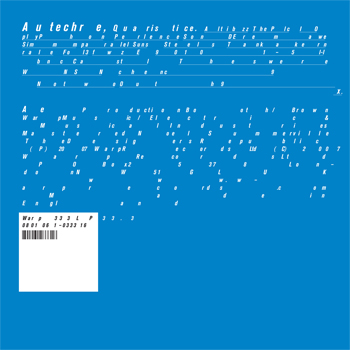 Piercing white hot treble hiss gushes from sterile iPod earbuds, pumping out deafening volumes into the passive, helpless skulls of my fellow commuters and fracturing my focus as I attempt to read a self-imposed requisite of at least thirty pages from my fifth book of the month and year.
Piercing white hot treble hiss gushes from sterile iPod earbuds, pumping out deafening volumes into the passive, helpless skulls of my fellow commuters and fracturing my focus as I attempt to read a self-imposed requisite of at least thirty pages from my fifth book of the month and year.
A young black woman with a white puffy jacket and a hard face in the two-seater to the left of me emits R&B songs that I don't recognize. I repeatedly fantasize about berating her about hearing loss after each song fades out, but I know better than that because this is the motherfucking subway and I'm a fucking native New Yorker with survival instincts. Considering the grim outlook of the U.S. economy and how crowded this damn car is, it would be just my luck that my agitated outburst would at last spark Charlie Manson's prophesized, long gestating race war, any desperate exclamations of my Cuban heritage going unheard as my glasses shatter, spilling fragments into my big brown pleading eyes.
More and more frequently, I worry about passing for white, a condition which has served me well in life thus far. The way I see it, it's just a matter of time before my luck turns against me and every racially insensitive joke I ever laughed at or told transmutates into karmic retribution. I think about this almost as much as I worry about going to prison and getting sodomized and pimped out to the other inmates. I am never going to prison. I will swallow fucking cyanide if I have to.
After a while, another woman in a long black coat sits next to me and I begin to experience a dizzying sensation as her tinny snares and hats clash arrhythmically with those of the woman on the left. Disorientation starts to set in when a thirty-something Latino male plops down next to her, the unmistakable clamor of reggaeton drizzling down his earlobes like thick, dramatic horror movie blood. I pray silently among the cacophony for my stop to come but instead we are delayed due to a sick passenger at 42nd Street Times Square. I am assured by the grimy, muffled speaker above me that we should be moving shortly and that we should be patient. Only minutes earler, this same politely authoritarian voice advised me to keep an eye out for suspicious packages and activity from my fellow passengers. Instead of figuring out whether or not to trust this fourth simultaneous assault on my senses, I turn back a page and consider how late I already am for work.
samples:
Read More
- Administrator
- Albums and Singles
 Honey Owens' sophomore effort for Kranky encapsulates a mystical space with both moments of direct songwriting and more spaced out passages of psychedelia. The album's artwork suits it's contents: a giant siamese cat swims in moonlight bathed waters that are simultaneously issuing forth from and retreating into some sort of God-head before the stars and a plateau ablaze.
Honey Owens' sophomore effort for Kranky encapsulates a mystical space with both moments of direct songwriting and more spaced out passages of psychedelia. The album's artwork suits it's contents: a giant siamese cat swims in moonlight bathed waters that are simultaneously issuing forth from and retreating into some sort of God-head before the stars and a plateau ablaze.Read More
- Administrator
- Albums and Singles
 The series of deluxe Japanese reissues of Sunn O)))'s oeuvre has peaked with this version of one of the group's finest moments. Long and undeservedly out of print, this early album has had its original vinyl artwork restored (the less than stellar art from the original CD has been relegated to an inner sleeve) and has been supplemented with a reworking of the album by Nurse With Wound. Reissue packages rarely look and sound so good.
The series of deluxe Japanese reissues of Sunn O)))'s oeuvre has peaked with this version of one of the group's finest moments. Long and undeservedly out of print, this early album has had its original vinyl artwork restored (the less than stellar art from the original CD has been relegated to an inner sleeve) and has been supplemented with a reworking of the album by Nurse With Wound. Reissue packages rarely look and sound so good.
When I heard this album (a dual purchase with their subsequent album, Flight of the Behemoth, when on vacation in Vienna), I was initially disappointed. In the following years I have grown to love it and as such I had no qualms about buying it again. With their White albums and Black One Sunn O))) would expand their sonic palette with nods to the avant garde and extreme metal but here they sounded pure and powerful, more monster than rock band. The stripped down line up compared to later incarnations of the group allow the guitar and bass space to breathe, making it possible to hear all the dissonances and rumbles properly.
Opening with one of the heaviest pieces Stephen O'Malley and Greg Anderson have ever done, "Richard," it is hard not to be taken aback by the singularity of their guitar and amp assault. The riffs are chunkier than on the more primitive Grimmrobe Demos album, the hypnotic gravitational pull of "Rabbits' Revenge" sucks in air rather than push it from the speakers. The Melvins sample in the middle of it is so completely out of place as to be disorientating; the Melvins sound like speed metal compared to these geological tempos.
Although it is credited as a remix of 00 Void, The Iron Soul of Nothing sounds nothing like the original album. Steven Stapleton has disintegrated the chest pummelling riffs into a far less muscular but still threatening ambience. Distant melodies during "Dysnystaxis" evoke the dreamy not-quite-slumber of the piece's title. The deep night of 00 Void has given way to a daybreak both glorious and terrible. "Ra at Dawn" is light years away from the original "Ra at Dusk." The brooding drones create an unsettling and queasy mood; it feels like the sun god Ra will not be rising today.
Overall, considering the scarcity of the original CD release of 00 Void and the sheer quality of the bonus disc, this package is well worth hunting down and paying import prices for. Those new to Sunn O))) could do far worse than to get this and hear how they were before so many collaborators jumped on board to push the sound in different directions (not that I'm complaining about this, just the later recordings never seem quite so primal).
samples:
- Richard
- Ra at Dusk
- Dysnystaxis (Nurse With Wound remix)
Read More
- Administrator
- Albums and Singles
 This is the sound of Kim Gordon and Thurston Moore getting it on under their Mirror/Dash duo. Recorded in May of 2005 at the Le Weekend festival this improv set couldn't be mistaken for the work of anyone else. There is no mistaking the signature sounds of these players, Gordon's vocal remaining the ultimate love-it-or-hate-it sound in alternative circles.
This is the sound of Kim Gordon and Thurston Moore getting it on under their Mirror/Dash duo. Recorded in May of 2005 at the Le Weekend festival this improv set couldn't be mistaken for the work of anyone else. There is no mistaking the signature sounds of these players, Gordon's vocal remaining the ultimate love-it-or-hate-it sound in alternative circles.
Her unmistakable vocal coos whispers and wanders across I Can’t Be Bought, sieving its way through feedback and shortwave transmissions. Even though it is clear who is performing here, there is still tension and restlessness in this performance. They may have the same tools as one of their quartet shows, but this is no mere Sonic Youth tea-break jam. Most importantly for a set of improvisational guitar music though is the fact that they never relax into plain old noise or get pluckily cerebral.
The shaky tension they create is held tight till the very end of the show, Gordon's coda threat of "Shake!" holding a ragged blade to the feedback's throat. Product of a backstage domestic or just broad open minds, the duo drag a little bit of harrowed muscle onto the stage. Slow slinking notes wind around Gordon's moans and disjointed singing, the guitar skirting the edges of possible rock riff avenues. There's a recurring downwards strum that ties the piece into reality, there's no chance that players this experienced could produce a comeless masturbatory fool around. Passages of chime play out back and forth before the duo pool their resources into great floating masses of sugared quake. Angular shrieks split single notes into a palette of hawked up sounds, that delicately bent crystal glean that they do so well; no one makes the sound of wrestling metal like Thurston Moore and Kim Gordon.
samples:
Read More
- Administrator
- Albums and Singles
 As this is Stereolab's lead vocalist's side-project, Laetitia Sadier's Monade has to suffer comparisons. Less heavy on the rock or drone than her day job, this four-piece go more for the diamante sparkle of lounge music and toe-tap Gallic cute-pop than her other band's heavier krauty feel. This, their second 'real' LP (their first being bedroom recordings), is another reliably steady and similar set of songs that won't set the world ablaze but retain a certain pop charm.
As this is Stereolab's lead vocalist's side-project, Laetitia Sadier's Monade has to suffer comparisons. Less heavy on the rock or drone than her day job, this four-piece go more for the diamante sparkle of lounge music and toe-tap Gallic cute-pop than her other band's heavier krauty feel. This, their second 'real' LP (their first being bedroom recordings), is another reliably steady and similar set of songs that won't set the world ablaze but retain a certain pop charm.
From the tranquil opening "Noir Noir" things don't progress much, Monade roll out the pleasant enough analogue-in-spring warmth with some nifty bass playing to keep things at the right end of perk. The start/stop jangle of some of the music elevates Monade into a more melodic area, away from a whisked smooth listen, adding a couple of edges to pull in a listener. Overall through, there's a gentle flow produced by the similar elements and aesthetic employed across the album, Sadier seemingly drawn into a subtler mind set.
The addition of strings on a couple of tracks adds a Sean O'Hagan tint to the album (again reminiscent of her musical past), making things a little more organic. These bare strings also work well as a balance against the up-tempo bounce of a track like "Entre Chien Et Lou" and its up-tempo change.
Lyrically, Sadier's English can sometimes feel a little heavy-handed, her cod socio-political couplets often left sitting out on their own, unsupported by the backing music ("Elle Topo" galls in particular). On the other hand, as I don't speak French, her native tongue lyrics have always been saved from any scoffing due to their inherent mystery. The album is a placid entity, some of these cuts could easily be on a Stereolab LP even if things here aren't as starkly produced or heavily stamped with that band's aesthetic.
samples:
Read More
- Administrator
- Albums and Singles
 David Reed is obsessed with the dark. Every synapse in his brain aims to realize a stygian monstrosity from the most basic electronic utterances. Into the Void successfully gathers those expressions into a crawling black chorus of sound, like a cantata sung for the terror infinite and empty space can inspire.
David Reed is obsessed with the dark. Every synapse in his brain aims to realize a stygian monstrosity from the most basic electronic utterances. Into the Void successfully gathers those expressions into a crawling black chorus of sound, like a cantata sung for the terror infinite and empty space can inspire.
Crucial Bliss
A meditative bleakness is amassed over the course of Into the Void with only the most cosmic instruments. The imaginary sounds of a supernova, the electric pulse of magnetic fields, and the icy explosions of colliding asteroids all play a role in Reed's swirling orchestras. And his songs do sound as though they are played by a group of empyrean and sentient beings. Unlike other artists who claim the fertile grounds of noise as their birth place, Reed's work is sober and composed instead of desultory and manic. Explosions radiate and dance with an observable intelligence instead of crashing and decaying senselessly and Reed never allows his bellowing cries to spill over into a continuous and bland stream of white noise.
That dedication to clarity ranks as one of this album's greatest strengths. Beyond being tightly controlled, every detail of Reed's heavenly pandemonium resounds as clearly as a bell no matter how busy it gets. No song depends on microscopic activity, but each breath of solar wind washes through the mix unhindered by sloppy production or over-zealous volume. This allows Reed to use the existing small details in each song to his advantage. On "Gravitational Pull" the presence of a monotonous synthesizer melody acts as a strong contrast to an ever-changing parade of radio noise; the two constantly pull at each other and manifest a tension that would not be possible if either were given over to excess. The absence of familiar musical conventions is made all the more powerful by the inclusion of distinct rhythms and melodic announcements. Both "Mariners" and "Dark Matter" depend on these recognizable features; without them both songs would sound all too static. Yet, if those features were anything more than occasional flourishes both songs would lose their ambiguous terror. Reed constantly plays a game of balance on each track, hushing any surfeit of sound in favor of a well-planned deficit.
Perhaps excess is the attractive and distinguishing feature for many extant experimental outfits, but I'm glad to hear Reed utilizing the power of subtlety and understatement. The spaces he leaves in his music are deceptive, often hiding the most surprising and effective moments. The best portions of this album are accompanied by silence or an illusory sense of it created by spaces opened up in the music; Reed has a talent for creating such abyssal places and decorating them with a real sense of foreboding and uncertainty. His compositions are unique and entirely synthetic, but somehow organic and frighteningly unpredictable despite their well-formed structures.
samples:
Read More
- Administrator
- Albums and Singles
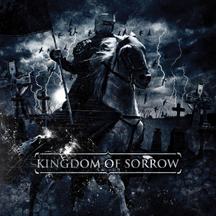 This is exactly what would be expected from pairing Jamey Jasta with axeman Kirk Windstein, this sludgy metalcore amalgam showcases the best qualities of both parties. Undulating with vibrancy amid its steady cathartic release, their self-titled release propounds an infectious, somewhat transcendent alternative to lesser acts in the crowded heavy music marketplace.
This is exactly what would be expected from pairing Jamey Jasta with axeman Kirk Windstein, this sludgy metalcore amalgam showcases the best qualities of both parties. Undulating with vibrancy amid its steady cathartic release, their self-titled release propounds an infectious, somewhat transcendent alternative to lesser acts in the crowded heavy music marketplace.
To dedicated fans of Hatebreed and Crowbar, Kingdom of Sorrow exists in a thick, pungent haze of publicity hype that often surrounds so-called metal supergroups, a categorization far better suited to Windstein's southern rock champions Down, which features the always imitated, never duplicated Phil Anselmo alongside his fellow Pantera alumnus Rex Brown and members of Corrosion Of Conformity and Eyehategod. As a passionate aficionado of that star-studded personality cult, I welcomed this new group with enthusiasm, eagerly counting down the days until the album's release. Early dismissive reports of the record on certain blogs seemed absurd as I found myself frequenting their Myspace page almost daily in order to listen repeatedly to the promising pre-release tracks. Although some might grumble that Kingdom of Sorrow doesn't hold a candle to Jasta and Windstein's other bands, I beg to differ, finding plenty to get pumped about from this barbarous, consistent debut.
From the pummeling hardcore of "Lead The Ghosts Astray" to plodding southern doom of "Begging For The Truth," Kingdom of Sorrow offers so much in the way of weighty, hooky riffage and threatening, memorable vocals that this project could possibly eclipse Jasta and Windstein's other ventures. Packing a punch that leaves both a bruise and a long resonating sting, the raucous "Free The Fallen" deserves to be a single if indie stalwart Relapse had chosen to release one. The presumably starstruck Jasta and his wise menacing elder Winstein work wonderfully together, combining their strengths to provide heavy hitters like "Hear This Prayer For Her" and "Buried In Black." In his years fronting Hatebreed, Jasta has voiced bonafide hardcore anthems, not the least of which being the classic "I Will Be Heard" off their career-making Perseverance. Yet the previously resolute screamer throws quite the curveball by actually singing on "Screaming Into The Sky." Apparently channeling his inner Anselmo, the former Headbanger's Ball host alternates between his conventional, crowd-pleasing roar and a more melodic, vulnerable warble as he trudges through heartfelt though sometimes uncomfortably awkward lyrics that find him coping with loss. While Windstein's vocals appear less frequently than his conspirator, his time on the microphone is no less rewarding, as on the agonized ballad "With Unspoken Words."
Unflinching from beginning to end, Kingdom of Sorrow presents Jasta unguarded, a welcome vulnerability not often found on the surface of a genre overflowing with overcompensating tough guys and their sad imitators. Still, that potential chink in the armor comes housed in enough metallic heft and impenetrable fury to withstand any would-be assassins. Besides, when these monstrous tunes are cranked high and the mosh pit erupts, nobody is going to be thinking about Jasta's personal pain.
Samples:
Read More
- Administrator
- Albums and Singles
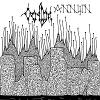 Mick Barr's latest album sees him take the concept of a face melting guitar solo and turning it into a multi-faceted and layered composition. There is no room here for any straightforward musical structures to provide a basis for Barr to take a solo from; instead he just goes at it without any thoughts given to easing the listener in gently. The concept of free jazz is one familiar to most but here is an example of free metal, the guitar screeching away from the pack and leaving a scorched trail behind it.
Mick Barr's latest album sees him take the concept of a face melting guitar solo and turning it into a multi-faceted and layered composition. There is no room here for any straightforward musical structures to provide a basis for Barr to take a solo from; instead he just goes at it without any thoughts given to easing the listener in gently. The concept of free jazz is one familiar to most but here is an example of free metal, the guitar screeching away from the pack and leaving a scorched trail behind it.
Unlike the majority of "guitarscape" albums that are out there, Barr keeps away from slow tempos and low frequencies. With Annwn he instead shreds away, layering complex guitar tracks over other equally complex tracks. The sheer amount of frenzied fret assault brings to mind images of bloodied stumps instead of fingers. The end result is something like having a dozen thrash metal guitarists thrown in a room and telling them to solo away in a given (but loosely defined) key for an indefinite amount of time. The notes are mostly along the midrange and treble end of the frequency spectrum and hit the ears like a hypodermic needle through skin.
Annwn has all the impact of any given Merzbow album—the shrill noise pierces through the room—but unlike noise in general there is a rhythmic and musical direction to the work. This makes it less of a challenge to listen to but makes it far more tiring to experience as my attention is constantly being grabbed by the musical aspects of the album. In a pure noise situation there are always times when you can switch off and rest your mind. There is no such respite here. Barr marches along a path that has been somewhat cleared by the likes of Albert Ayler and Masima Akita but he diverges from them, reaching the same location but from a different route.
This album is a long, testing listen (in a good way). There are so many layers of guitar on any given part of Annwn that it is impossible not to become disorientated when trying to focus on what a particular guitar is doing. This makes for interesting listening as each time I spin the disc there whole tracts of music that I notice that have been previously ignored in order to try and figure out what Barr is playing in the foreground. Due to this huge amount of detail, I am drawn back to Annwn despite it being a thoroughly exhausting way to spend 80 minutes.
samples:
Read More

